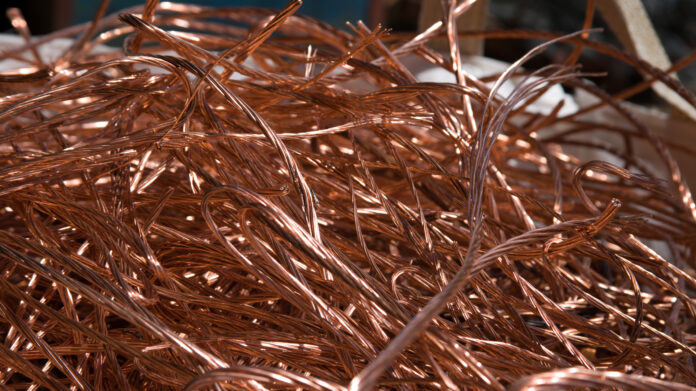
COPPER cable theft accounted for more platinum group metal (PGM) production losses than power curtailment in Sibanye-Stillwater’s first quarter, it said today.
Commenting in a production update, the precious metals producer said it lost 5,200 ounces of 4E PGMs in the three months ended March compared to load curtailment losses of 5,120 oz. The data underpins statements by Sibanye-Stillwater that criminality was increasingly threatening the viability of business in South Africa.
“The deteriorating quality of public services and increase in organised criminal activity in South Africa has become an increasing risk,” Sibanye-Stillwater CEO Neal Froneman said in comments to the first quarter numbers.
At R7.82bn ($441m) first quarter adjusted Ebitda (earnings before interest, tax, depreciation and amortisation) almost halved year-on-year owing to a decline in PGM prices. In rands, PGM prices for its 4E sales were 19% lower year-on-year.
The first quarter results demonstrate Sibanye-Stillwater’s reliance on its South African PGM assets which comprised R7bn of Ebitda. US PGM production was interrupted owing to a shaft accident, and while South African gold production stormed back following last year’s strike, they contributed a slim R744m of total Ebitda.
South Africa’s PGM miners have remarked previously that load curtailment by Eskom power could result in PGM production declines of up to 25% this year. In contrast, however, Sibanye-Stillwater PGM declines were relatively modest in the first quarter.
“We have a lot of flexibility in our PGM processing facilities as our Marikana (former Lonmin) assets only operate at 50%,” said James Wellsted, spokesman for Sibanye-Stillwater. However, load curtailment remains a present risk.
“We said there was a risk that our South African PGM production could be up to 15% lower for us this year and between 20% and 25% for the country and that risk remains, especially as we are heading into winter,” Wellsted said.
Given the mature nature of its gold operations in South Africa, struggles with US PGM production which last year were stopped owing to flooding, Sibanye-Stillwater was pressing on with expansion into green metals production.
It would debt finance the balance required for the R10.5bn Keliber lithium project in Finland after an investment by the Finnnish government concluded the equity portion of the project’s financing this quarter.
Sibanye-Stillwater said it expected to complete a feasibility study into a PGM recycling facility on property adjacent to its Sandouville nickel processing unit by December, and a second feasibility into a battery metals recyling facility a year later in 2024.
The aim was to establish a green metals ‘node’ recycling ‘black mass’ (spent batteries) including customers it supplied with nickel sulphate from Sandouville. Combined with Keliber, Sandouville would underpin Sibanye-Stillwater’s circular economy ambitions in Europe.
New Century, a base metals reclamation company in Australia, had been recapitalised after Sibanye-Stillwater bought 95% of the firm’s stock. It would be delisted.
The South African group is also participating in the development of the Rhyolite Ridge lithium-boron project in the US state, Nevada. In January, the US government approved a $700m loan to the project.









